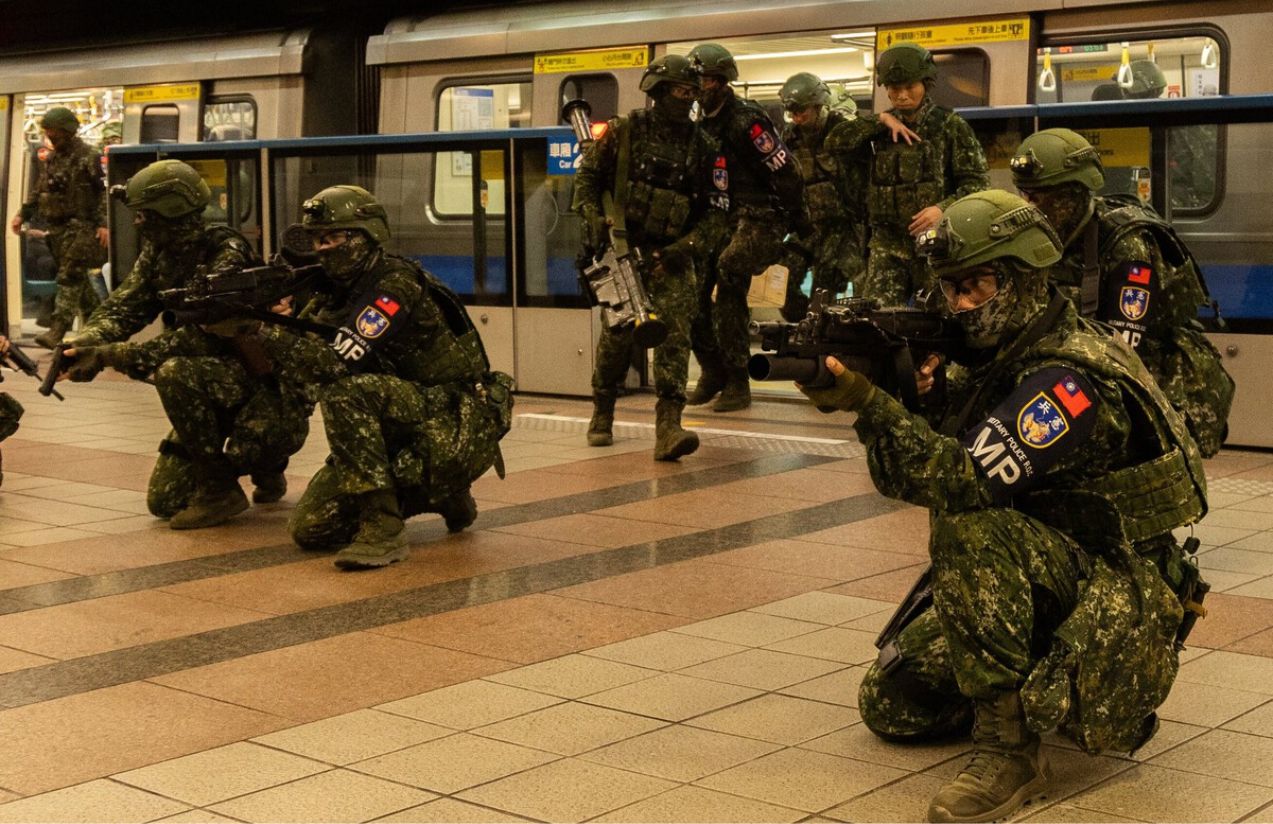What would normally be a typical morning in Taipei’s metro—parents with children, office workers in suits, tourists dragging suitcases—took a dramatic turn in the early hours of Monday. Instead of regular commuters, the city’s subway platforms and carriages were filled with armed soldiers, anti-tank missiles, and army units transporting ammunition and supplies.
Images released by Taiwan’s Ministry of National Defense and its military news agency confirmed the unusual scene: the heart of the capital’s public transport system had become a training ground. Soldiers from the Military Police and the Army’s Third Command were deployed between Shandao Temple and Longshan Temple stations—a key route that includes the busy Main Station.
This extraordinary display was not triggered by any immediate threat from China’s People’s Liberation Army (PLA). It was part of the Han Kuang military exercises, annual war games that Taiwan has been conducting for decades to prepare for a possible invasion by Beijing. But this year’s edition stands out for both its scale and symbolism: never before have the drills been so visible or so closely integrated into daily civilian life.
According to outlets like BBC and Reuters, it is the largest simulation held to date. Running from July 9 to 18, the 10-day operation features drones, rocket launchers, missiles, and the U.S.-supplied HIMARS rocket system. A total of 22,000 reservists have been mobilized—50% more than in 2024.
More than the numbers, what’s striking is the visibility. As the Financial Times points out, these drills aim to bring Taiwan’s war preparedness directly to the public. Rather than isolated exercises in coastal or military zones, this year’s operations place soldiers in metro stations, on commuter trains, and in front of coffee shops where Taiwanese citizens go about their day.
“If war ever comes, they’ll fight right here,” said an elderly Taipei resident to the British newspaper. And that appears to be exactly the point: to raise public awareness, prepare civilians for the possible reality of conflict, and test the feasibility of using public infrastructure like the metro system during emergencies.
The drills didn’t stop at the subway. In recent days, Taiwan’s military has simulated attacks on critical infrastructure, decentralized operations, urban resilience scenarios, and large-scale air and naval maneuvers to defend the coastline. On Monday, the country even livestreamed a coastal mine-laying exercise to showcase its readiness against a potential amphibious assault by the PLA.
“We are learning from Ukraine,” a senior Taiwanese defense official told Reuters. The ongoing war in Eastern Europe has served as a reference point, prompting Taiwan to strengthen communication systems, decentralize command structures, and test advanced weapons like the Sky Sword surface-to-air missiles.
The timing of this heightened preparedness is no coincidence. China sees Taiwan as a breakaway province and has ramped up military pressure on the island over the past five years. In May, the U.S. Secretary of Defense warned that Beijing could attempt to invade Taiwan by 2027, stating that “the PLA trains for this daily.”
From Beijing’s perspective, Taipei’s efforts are futile provocations. “Taiwan’s attempt to seek independence by force or by relying on foreign actors will never succeed,” said Chinese Foreign Ministry spokesperson Mao Ning. The Chinese government insists that “no matter what weapons it uses,” Taiwan cannot stop the PLA from opposing independence.
Amid a complex and tense regional backdrop, Taipei is sending a clear message to both its citizens and the world: it is ready to defend itself—and it wants everyone to know it. This time, even underground.

